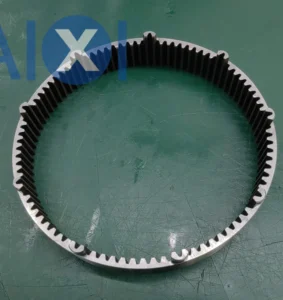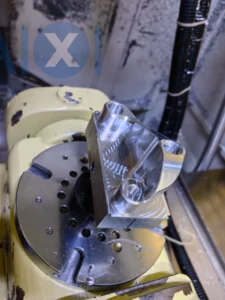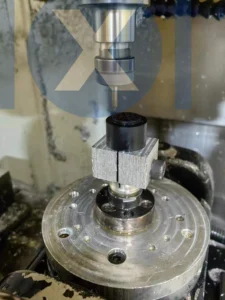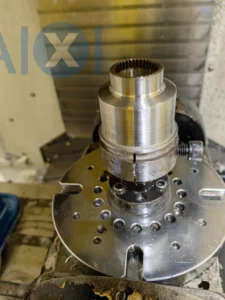Introduction
Technology is rising every day. You can find many CNC machines that assist in cutting and removing some pieces and reaching the highest efficiency levels. You get 100% accuracy in the cutting and planning of the workpiece.
Machining is the top option available to the manufacturers. But it is present in different forms and operations. Therefore, we will discuss the conventional and non-conventional types of machining processes.
Let’s discuss it in detail.
What is machining?
Machining is one of the crucial parts of the manufacturing industry. Manufacturers deploy different machining operations to transform the shapes of metals. Furthermore, they remove the bizarre-shaped components, making the metal smoother, cleaner, and brighter.
In actuality, the workpiece has extra material to be removed and shaped. Therefore, you can consider it subtractive manufacturing. The purpose of machining is to produce a perfect workpiece and prepare different components of machines and tools.
Types of machining processes
There are two types of metal machining processes. One is a conventional method that harnesses the traditional cutting methods. Another is the non-conventional method that uses different types of latest cutting options. Commonly, it relies on the laser, chemical, and electrical methods.
Let’s talk about both types of machining processes.
Conventional Machining Processes
Various machining processes deploy traditional or sometimes physical cutting tools. These tools often come with CNC machines for better precision of cutting.
Here is the complete list of such processes.
-
Turning
Why do we call it a turning machining process? This is because the workpiece rotates around the stationary cutting tool. The motion provides a symmetrical material cutting, ensuring better cylindrical or conical-shaped tool production. Turning helps design the following parts:
- Engine parts
- Machine parts
- Shafts
- Holes
AIXI hardware has some top-quality turning machining operations. Enjoy the higher efficiency and exceed your cutting expectations.
-
Drilling
Drilling is one of the most commonly used metal machining processes. It creates the holes and produces a perfect lock and key-like model. The drill press creates a hole in the workpiece, allowing the fixing of different components at a time.
Here are some popular applications of the drilling process.
- Screw holes
- Making Threads
-
Boring
Once you have created the hole with a drilling machine, look forward to the boring. It widens the hole in the point and enlarges it. The single-point cutting tool helps increase the hole width and provides a perfect workpiece ready to undergo your operations.
Many applications use boring as a central idea. Here are a few ones:
- Engine shafts
- Gun cylinders
- Turbine cylinders
-
Reaming
Reaming has a tool called a reamer. Unlike drilling or boring, it has a multi-cutting tool that helps smoothen the drilled holes. It leveled the edges and created the desired diameter for the drilled holes.
Many popular industries use the reaming process, such as:
- Aircraft components
- Engine parts
- Fuselage
- Landing gear
-
Milling
Milling is one of the most excellent methods in the metal machining operations. It has a fast rotary cutting tool with a stationary workpiece. The cutting tools come in different shapes and sizes, allowing better process results.
Whether automated or manual cutting, milling nurtures a perfect cutting shelter. Many milling types include end milling, face milling, or knee milling. AIXI hardware also provides flawless milling services.
Keep an eye on the following applications:
- Slotting
- Contours
- Gear cutting
- Thread making
-
Grinding
The work is evident with its name— grinding of the material. It gives a secondary touch to the already present workpiece. If there are any defects in the metal, leave it on the grinding machine.
Grinding not only improves the efficiency but also provides dimensional accuracy. Following are its applications.
- Surface finishing
- Descaling
- Deburring
-
Tapping
Have you ever heard of tap-and-die sets? Think of this metal machining process as being of that sort. It creates the threads in the workpiece internally. The tap tool’s rotation can make the tool’s inner holes.
Remember, the holes must be pre-drilled. It includes the following applications:
- Threads for screws and bolts
- Plumbing
-
Planing
If you want to create a leveled surface on a material, then the planning process is here. It deploys the planer tool that eliminates all the raised edges and irons out all the parts.
The following applications of the planning process are there:
- Woodworking
- Dovetail joints
- Slots and groove-making
-
Knurling
For all aesthetic lovers, knurling is their favorite process. Unlike drilling or smoothening the edges, it creates the shapes. You can imprint the horizontal or vertical lines. They even make beautiful patterns with the knurling process. Rolling of the knurling pin provides an aesthetic touch.
-
Sawing
Do you want to cut the metal into tiny pieces? Well, sawing is the process that can be your deal. It has a sawing tool that passes through the metals. Finally, it slashes the metal into different pieces. You can decide the size and quantity of the piece based on your needs. Sawing has been a part of the woodworking or metallic industry for decades.
-
Shaping
Shaping provides the desired shapes of the material. It creates the specific metal portions and effectively shapes them into desired conditions. You can create flat, curved, or inclined surfaces depending on your goals and metal types.
-
Broaching
Broaching makes many keyholes, splines, gears, and slots. How does it work? The working mechanism relies on a tool called a broach. The tool removes the parts of the workpiece in a single go.
-
Lapping
Lapping focuses on the elimination of rough surfaces. The workpiece rubs against the lap plates and eliminates all the rough edges. Finally, after the process, you get a smooth piece of metal that is quite effective for your tool-making.
Non-conventional Machining Processes
In non-conventional machining processes, machines or traditional cutting methods are forgotten. Instead, it deploys the heat or forces the cut through the metals and shapes them into different contours.
Let’s have a detailed discussion about this aspect.
-
Electrical Discharge Machining
The electrical discharge machining process uses high-voltage impulses to melt the material. This process is quite influential in cutting the metal pieces at specific points. Apply it to the conductive materials only.
Here are a few applications:
- Mold manufacturing
- Die manufacturing
- Blanking punches
- Tooling
- Surgical equipment
-
Chemical Machining
Chemical reactions can be a big boost when cutting through materials. The workpiece is dipped into the chemical agent, and unmasking occurs for all the areas to be removed.
Finally, it removes the desired pieces of the metals and helps in various applications. Here are a few applications.
- Machining fragile parts
- Automobile parts
- Aircraft parts
- Fine screens
- Wire meshes
- Machining hard-to-handle workpiece
-
Electrochemical Machining
Electrical and chemical processes can be combined to cut the materials. It helps shape and cut the materials effectively. There is no need to worry about surface hardness and machinability.
Some applications include:
- Drilling multiple holes
- Die sinking
- Profiling
- Contouring
- Turbine blades
-
Abrasive jet machining
Abrasive particles are also effective in machining processes. This method uses a high-speed gas stream and provides energy to the abrasive particles. These particles help in the cutting process of the material from the workpiece.
-
Ultrasonic machining
Ultrasonic waves have dominated the industry with their flawless approach to cutting and cleaning materials. It deploys a tool containing an abrasive paste on the tip.
This tip can move around the material and remove the material. Here are a few applications of ultrasonic machining.
- Machining sensitive materials
- Glass Cutting
- Optical equipment
- Electrical equipment
-
Laser beam machining
A high-energy laser beam can also prove to be effective in cutting. Usually, this machining process works on poor conductivity materials.
Applications of laser beam machining include:
- Cladding
- Surface Treatment
- Marking
- Medical equipment
- Marine industry
- Automobile sector
- Aircraft industry
-
Water jet machining
You might have heard of water being a necessary component of our body. But here is another crucial use of water. A high-pressure water beam is a thunderbolt that passes through every metal and surface. In water jet machining, manufacturers create a narrow water beam that passes through the material. It cuts the metals at points in specific shapes and patterns.
Applications are:
- Surgical equipment
- Automotive parts
- Dental implants
- Prototyping
-
Ion beam machining
Ion beam machining disturbs the molecular structure of the metals. It changes the structure of the metal when the ions collide with the metal surface. It has tons of applications. These include:
- Etching in the electronics industry
- Optical industry
- Fine wire die
-
Plasma Arc Machining
High-velocity ionized gas makes a plasma arc. This plasma Arc cuts the material. With its high-power cutting, you can shape and cut the metal in desired conditions. It provides a clean-cutting processes and ensures a high efficiency. Common examples of plasma arc cutting is the aluminum metals and its alloys.
Conclusion
Machining operations can turn the transformation game in your favor. But make sure you achieve high efficiency and produce rapid prototypes. The problem lies in finding the top suppliers.
Do you have suitable suppliers to fulfill all your needs? If not, don’t worry; AIXI hardware has been working for many years. Complete your tool-making activities with cutting-edge technology. Grab top-quality CNC machining and improve your efficiency.

 Deutsch
Deutsch Français
Français 日本語
日本語 Español
Español



